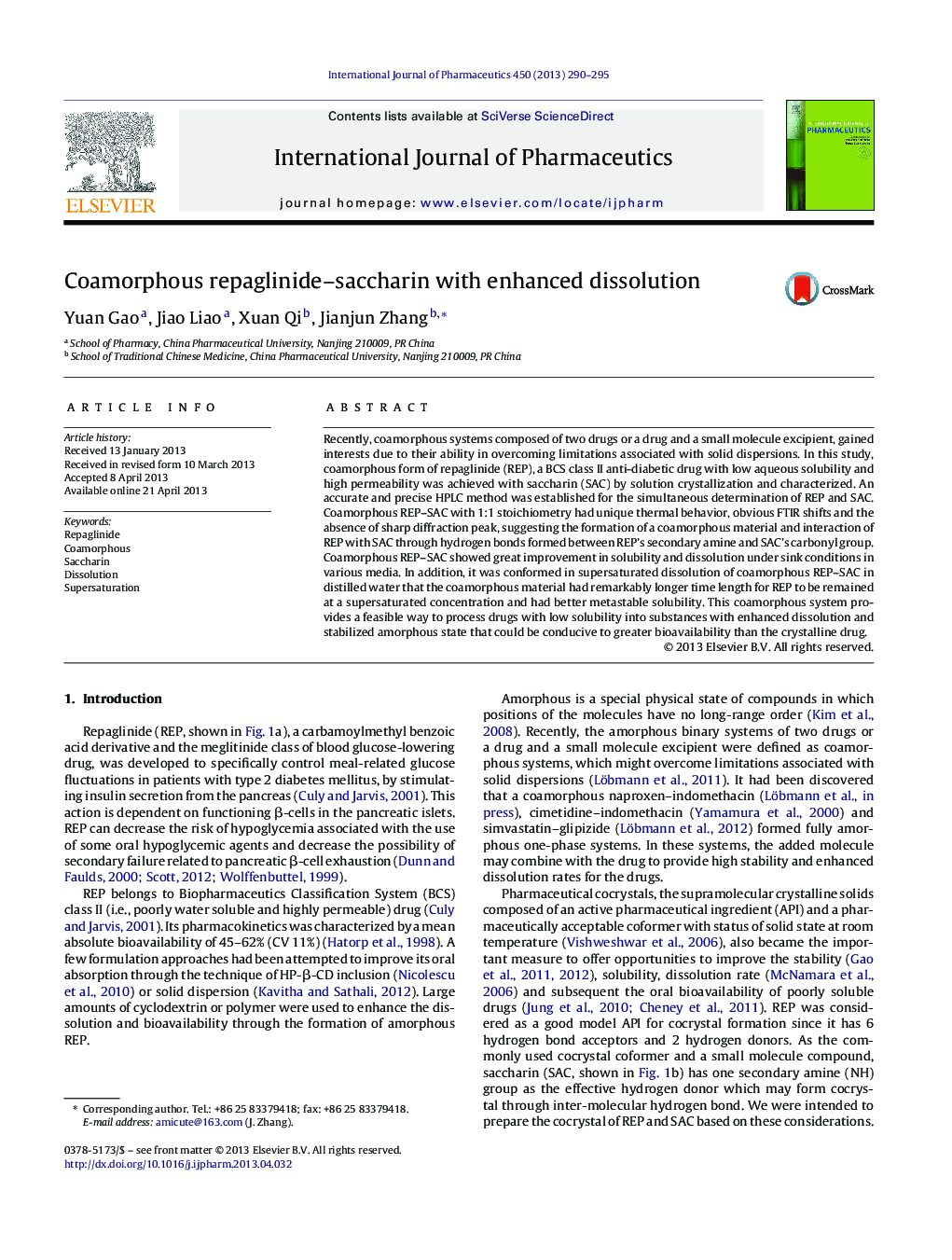| Article ID | Journal | Published Year | Pages | File Type |
|---|---|---|---|---|
| 2502442 | International Journal of Pharmaceutics | 2013 | 6 Pages |
Recently, coamorphous systems composed of two drugs or a drug and a small molecule excipient, gained interests due to their ability in overcoming limitations associated with solid dispersions. In this study, coamorphous form of repaglinide (REP), a BCS class II anti-diabetic drug with low aqueous solubility and high permeability was achieved with saccharin (SAC) by solution crystallization and characterized. An accurate and precise HPLC method was established for the simultaneous determination of REP and SAC. Coamorphous REP–SAC with 1:1 stoichiometry had unique thermal behavior, obvious FTIR shifts and the absence of sharp diffraction peak, suggesting the formation of a coamorphous material and interaction of REP with SAC through hydrogen bonds formed between REP's secondary amine and SAC's carbonyl group. Coamorphous REP–SAC showed great improvement in solubility and dissolution under sink conditions in various media. In addition, it was conformed in supersaturated dissolution of coamorphous REP–SAC in distilled water that the coamorphous material had remarkably longer time length for REP to be remained at a supersaturated concentration and had better metastable solubility. This coamorphous system provides a feasible way to process drugs with low solubility into substances with enhanced dissolution and stabilized amorphous state that could be conducive to greater bioavailability than the crystalline drug.
Graphical abstractFigure optionsDownload full-size imageDownload high-quality image (65 K)Download as PowerPoint slide
